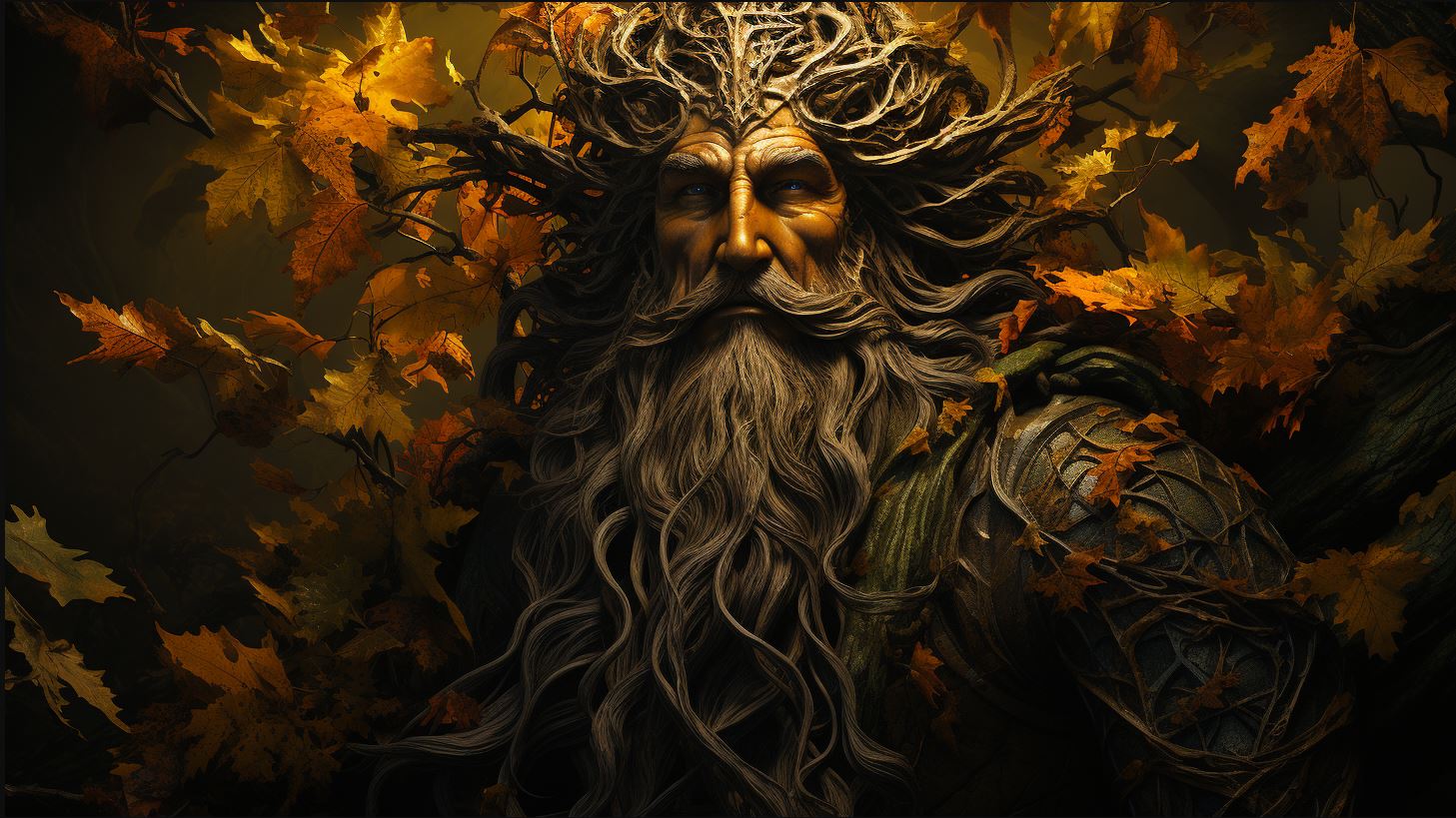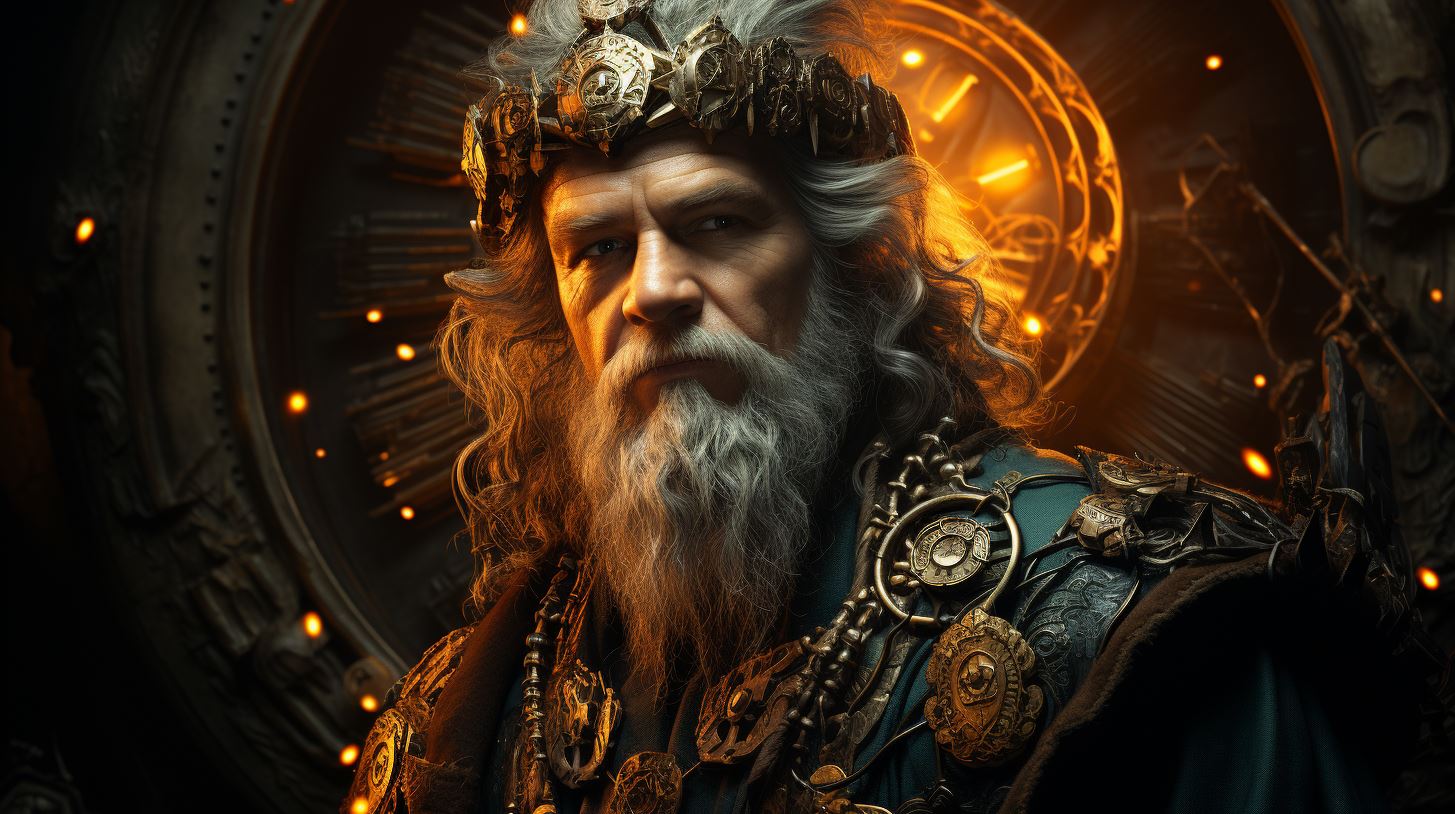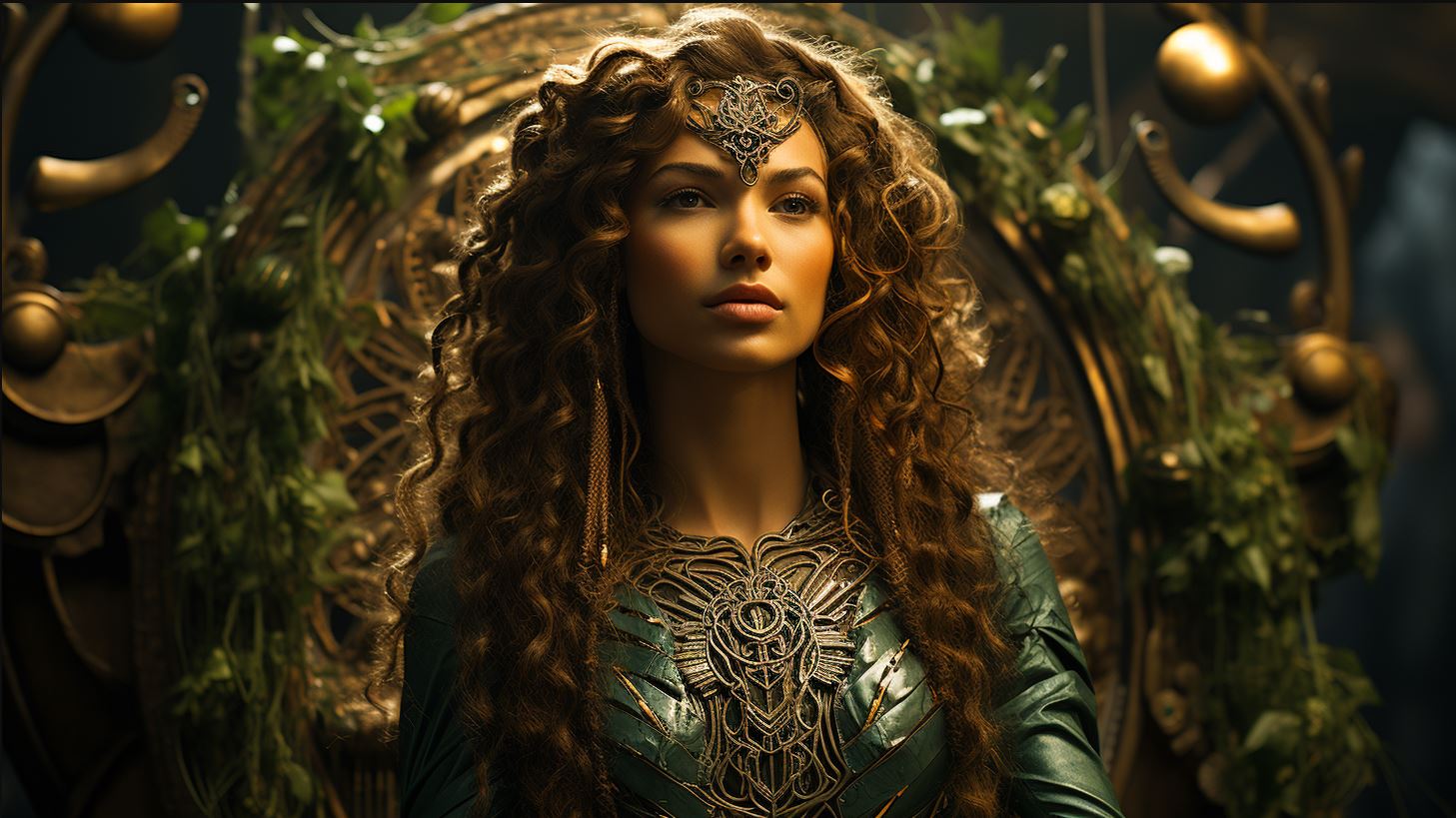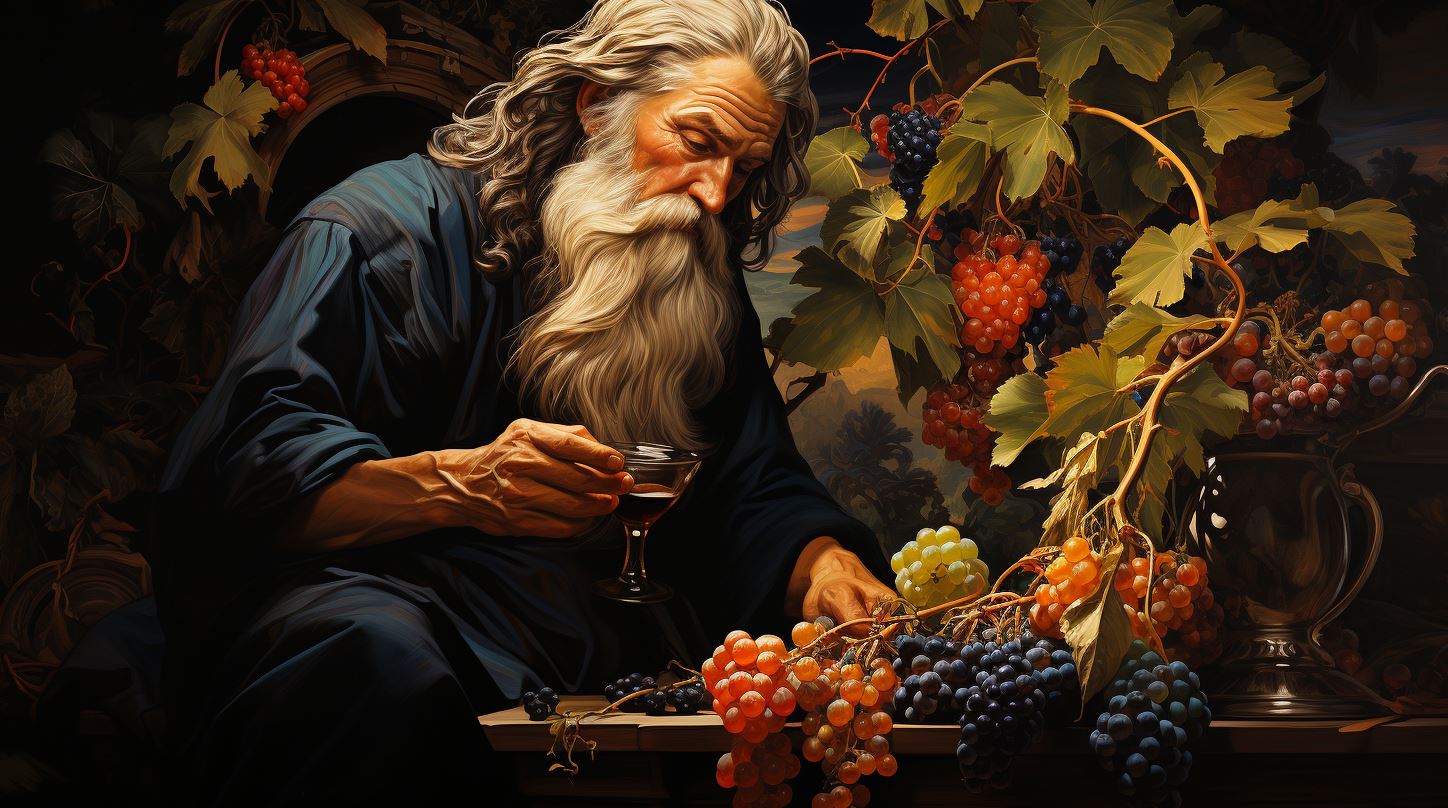Gofannon God: The Divine Smith of Celtic Mythology
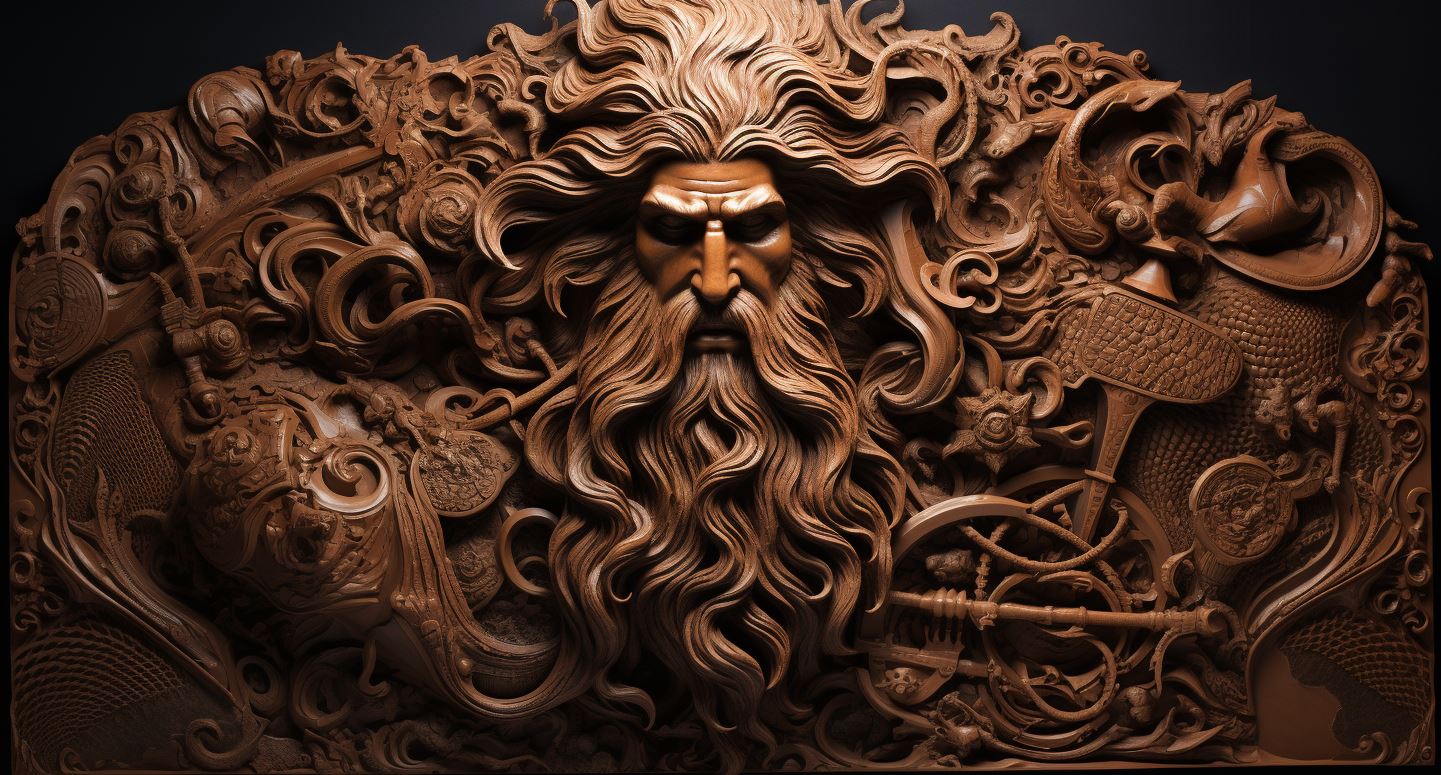
Gofannon god, known as the ‘Divine Smith’ of Celtic mythology, holds a significant role in Welsh legends and tales. This deity, identified as Goibhniu in Ireland and compared to Vulcan of Roman mythology, possessed extraordinary metalworking abilities, forging precise and deadly weapons.
Archaeological findings, such as decorated vessels and representations in Corbridge, highlight the worship and influence of Gofannon in northern Britain. This article delves into Gofannon’s feats as a smith, his creations, associated mythological accounts, and examines his relevance in contemporary Welsh culture.
Additionally, it explores related figures like Gobban Saer and potential connections with Cobannos.
Gofannon: The Divine Smith of Celtic Mythology
Gofannon, a central figure in Celtic mythology, holds the revered title of the ‘Divine Smith.’ In Welsh mythology, Gofannon is prominently known for his role as a skilled blacksmith and metalworker.
Associated with the craft of forging, Gofannon is believed to possess almost magical abilities in working with metals. His exceptional craftsmanship is regarded with awe and wonder, and the objects he created were considered to be both brilliant and strong.
Welsh Mythology: Gofannon and his Role as a Smith God
Within the realm of Welsh mythology, Gofannon occupies a significant place as the god of smithing. He is believed to be the son of Belenos, the sun god, and his wife Anu. Gofannon’s expertise in metalworking elevated him to the stature of a divine figure.
The ancient Celts considered the art of working with metal as a sacred and almost mystical practice, attributing supernatural qualities to the skills and creations of smiths like Gofannon.
Comparing Gofannon with other Smith Deities in Celtic and Irish Mythology
Gofannon’s counterparts in Irish mythology are often identified as Goibhniu, the divine smith. Both figures share similar attributes and characteristics, reflecting the cultural and religious influences between Celtic traditions. In fact, Goibhniu is considered the most important smith deity in Irish mythology.
The parallels and similarities between Gofannon and Goibhniu underline the shared beliefs and religious practices of the Celtic people across different regions.
The Legends and Stories Associated with Gofannon’s Smithing Abilities
Various myths and legends surround Gofannon and his exceptional smithing abilities. It is said that the weapons forged by Gofannon were exceptionally precise and inflicted mortal wounds upon their targets.
For instance, Gofannon forged swords for Loucetios (Lugh) and the Tuatha before the second Battle of Magh Tuiredh. He also crafted a silver hand for the injured Nodens (Lludd), displaying his incredible skill and prowess.
Gofannon in Celtic Artifacts and Archaeological Discoveries
As we delve into the fascinating realm of Gofannon’s influence, we uncover a treasure trove of Celtic artifacts and archaeological discoveries that provide insights into his legacy as the Divine Smith.
Let’s explore the representation of Gofannon in Corbridge, uncover evidence of his worship and influence in northern Britain, and examine the decorated vessels and tools that depict the exceptional craftsmanship of Gofannon the Smith.
Exploring the Representation of Gofannon in Corbridge
Corbridge, a historic site in northern England, offers a captivating glimpse into the depiction of Gofannon. Within the archaeological remains found in the area, we discover intriguing representations and symbols associated with the Divine Smith.
These depictions shed light on the reverence and importance bestowed upon Gofannon in the ancient Celtic culture.
Evidence of Gofannon’s Worship and Influence in Northern Britain
Archaeological excavations and findings across northern Britain provide compelling evidence of Gofannon’s worship and influence in the region. From Malton in Yorkshire to Corbridge in Northumbria, decorated vessels adorned with hammers, anvils, and other smithing tools showcase the deep reverence and belief in Gofannon’s divine craftsmanship.
These discoveries offer a glimpse into the spiritual practices and cultural significance attached to Gofannon in ancient Celtic society.
Decorated Vessels and Tools Depicting the Craft of Gofannon the Smith
Among the remarkable archaeological findings attributed to Gofannon are decorated vessels and tools that beautifully depict the mastery of the Divine Smith.
These intricately adorned items, crafted with immense skill and attention to detail, highlight the importance placed on metalworking and the transformative power of Gofannon’s creations. These artifacts serve as a testament to the awe-inspiring craftsmanship that was believed to possess almost magical qualities in Celtic mythology.
In conclusion, the examination of Celtic artifacts and archaeological discoveries unveils the profound influence and reverence accorded to Gofannon, the Divine Smith. Through the representation in Corbridge, evidence of worship and influence in northern Britain, and the remarkable decorated vessels and tools, we gain a deeper understanding of how Gofannon’s divine craftsmanship left an indelible mark on Celtic culture.
The Mythological Account of Gofannon’s Feats and Creations
Within Celtic mythology, Gofannon, the revered Divine Smith, played a significant role in battles, crafting weapons and armors with unparalleled precision. Gofannon’s Role in Battles: Forging Weapons and Armors delves into the legends surrounding his remarkable ability to create weapons that were not only deadly but also infallibly accurate, inflicting fatal wounds upon their intended targets.
Expanding beyond weapons, Gofannon showcased his creative mastery by fashioning remarkable artifacts, such as silver prosthetics and other ingenious creations. Gofannon’s Creation of Silver Prosthetics and Other Marvelous Artifacts explores his extraordinary craftsmanship and the practical yet magical attributes imbued in each of his works.
Gofannon’s influence extended beyond the realm of crafting. As the host of the banquet in the Underworld, he provided a special beer that bestowed immortality upon those who partook of it.
This captivating tale is explored in Gofannon as the Host of the Banquet in the Underworld, delving into the mythical significance of Gofannon’s role in the realm of divine feasts.
Gofannon’s Role in Battles: Forging Weapons and Armors
In the epic battles of Celtic mythology, Gofannon’s craftsmanship proved invaluable.
His weapons were renowned for their precision and ability to deliver lethal blows. Legends speak of his involvement in the second Battle of Magh Tuiredh, where he forged swords for Loucetios (Lugh) and the Tuatha.
Each weapon was said to be flawless, ensuring victory for those who wielded them.
Gofannon’s Creation of Silver Prosthetics and Other Marvelous Artifacts
Gofannon’s skill extended beyond weaponry, showcasing his ability to mold silver into incredible forms. Notably, he crafted a silver hand for the wounded Nodens (Lludd), a testament to his resourcefulness and artistry.
These silver prosthetics represented his mastery over not only physical creations but also the restoration of health and functionality.
Gofannon as the Host of the Banquet in the Underworld
A fascinating aspect of Gofannon’s mythology lies in his role as the host of the banquet in the Underworld. The enticing allure of his special beer, which bestowed immortality upon its drinkers, created a sense of awe and reverence for Gofannon’s formidable powers.
This legendary feast was believed to unite the mortal and divine realms, showcasing Gofannon’s ability to bridge the gap between worlds.
These captivating tales of Gofannon’s involvement in battles, his creation of marvelous artifacts, and his role as the host of divine feasts highlight the multifaceted nature of this revered Divine Smith in Celtic mythology.
Gobban Saer and Other Related Figures in Celtic and Welsh Mythology
In Celtic and Welsh mythology, Gobban Saer is a significant figure known as the builder of churches during Christian times. This section explores Gobban Saer’s role and contributions as an accomplished builder and craftsman.
It also delves into the potential connections between Gofannon, the divine smith, and Cobannos, as well as Gofannon’s association with Vulcan in Roman mythology.
Exploring Gobban Saer: The Builder of Churches in Christian Times
Gobban Saer holds an esteemed place in Celtic mythology as the legendary builder of churches.
According to ancient tales, he possessed unparalleled skills in architecture and construction. Gobban Saer’s craftsmanship extended beyond practical buildings; he was also known for creating stunning structures that showcased intricate designs and exceptional artistry.
Gobban Saer’s involvement in church-building symbolizes the blend of Christian influences with the rich mythological traditions of Celtic and Welsh cultures. The stories surrounding Gobban Saer depict him as not just a master builder but also a revered figure who bridged the gap between the old and the new belief systems.
Possible Connections between Gofannon and Cobannos
While Gofannon is widely recognized as the divine smith in Welsh mythology, there are intriguing parallels that suggest a potential connection between Gofannon and Cobannos, another deity with evidence of being a smith.
Some researchers speculate that these two figures might represent different aspects of the same entity or share a similar mythological lineage.
Although the available information is limited, the existence of Cobannos as a deity associated with smithing corroborates the importance of this craft in Celtic and Welsh cultures.
Exploring the similarities and potential connections between Gofannon and Cobannos provides valuable insights into the interconnectedness of ancient mythologies.
Gofannon’s Association with Vulcan in Roman Mythology
In Roman mythology, Vulcan is revered as the god of fire, metalworking, and craftsmanship. Interestingly, there are striking similarities between Vulcan and Gofannon, both revered as divine smiths with exceptional abilities.
These similarities raise the possibility of a cross-cultural influence or a shared origin of beliefs between the Celtic and Roman traditions.
Gofannon’s association with Vulcan highlights the fluidity and interconnected nature of mythologies, transcending cultural boundaries.
Exploring these connections sheds light on the extensive exchange of ideas and beliefs that occurred throughout history, shaping the perceptions of divine figures like Gofannon across different mythological systems.
Gofannon, the revered Divine Smith of Celtic mythology, continues to hold immense cultural significance in contemporary Welsh culture. This section explores Gofannon’s enduring impact and his role as a creative force and shaper of technologies, his place in modern interpretations and recognitions, as well as his relevance in the rich tapestry of Welsh culture today.
Gofannon’s Role as a Creative Force and Shaper of Technologies
Gofannon, known for his exceptional metalworking skills, symbolizes the power of creation and innovation. As a deity associated with craftsmanship, he embodies the concept of creativity itself, inspiring artisans and craftsmen to push boundaries and excel in their respective fields of work.
In modern times, Gofannon’s influence is felt in various creative industries, from traditional blacksmithing to contemporary art and design. His legacy as a creative force continues to inspire individuals to explore new frontiers and shape innovative technologies.
Gofannon’s Place in Modern Interpretations and Recognitions
As Welsh mythology and folklore gain renewed interest in the modern world, Gofannon’s stature as the Divine Smith is being rediscovered and celebrated. Artists, writers, and scholars draw inspiration from his myths and stories, incorporating his character into contemporary art, literature, and media representations.
Moreover, Gofannon’s inclusion in cultural events, festivals, and exhibitions showcases his enduring presence in the collective consciousness of the Welsh people. Through these modern interpretations and recognitions, Gofannon’s legacy lives on and continues to captivate the imagination of generations.
Exploring Gofannon’s Relevance in Contemporary Welsh Culture
In contemporary Welsh culture, Gofannon serves as a reminder of the country’s rich mythological heritage and deep connection to its Celtic roots. Festivals and events dedicated to Celtic traditions often feature Gofannon as a prominent figure, both as a symbol of Welsh craftsmanship and a representation of the inherent spiritual values associated with skilled metalworking.
Additionally, Gofannon’s stories and legends are passed down through generations, preserving the oral tradition of Welsh folklore. His continued presence reinforces a sense of cultural identity and serves as a source of pride for the Welsh people, fostering a deeper appreciation for their history and mythology.
- Gofannon embodies creativity and innovation, inspiring artisans and craftsmen.
- His influence can be seen in various creative industries, from blacksmithing to contemporary design.
- Gofannon’s myths and stories are incorporated into modern art, literature, and media.
- Cultural events and festivals celebrate Gofannon’s legacy and his place in Welsh culture.
- His relevance serves as a reminder of Wales’ mythological heritage and Celtic roots.
- Gofannon’s presence fosters a sense of cultural identity and pride among the Welsh people.
.














